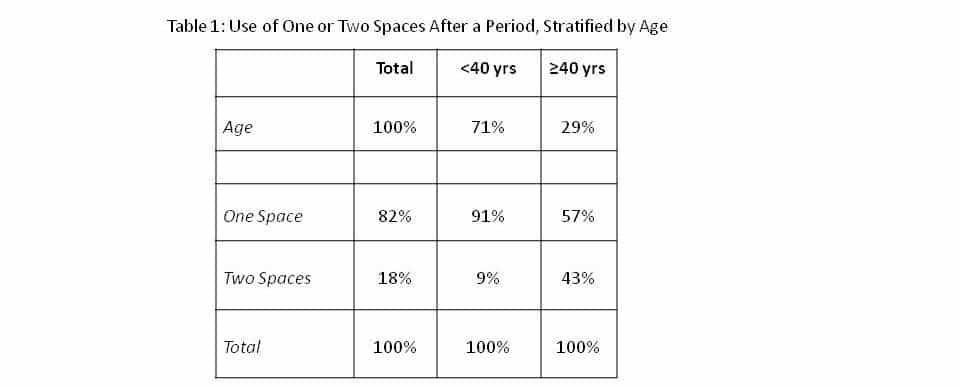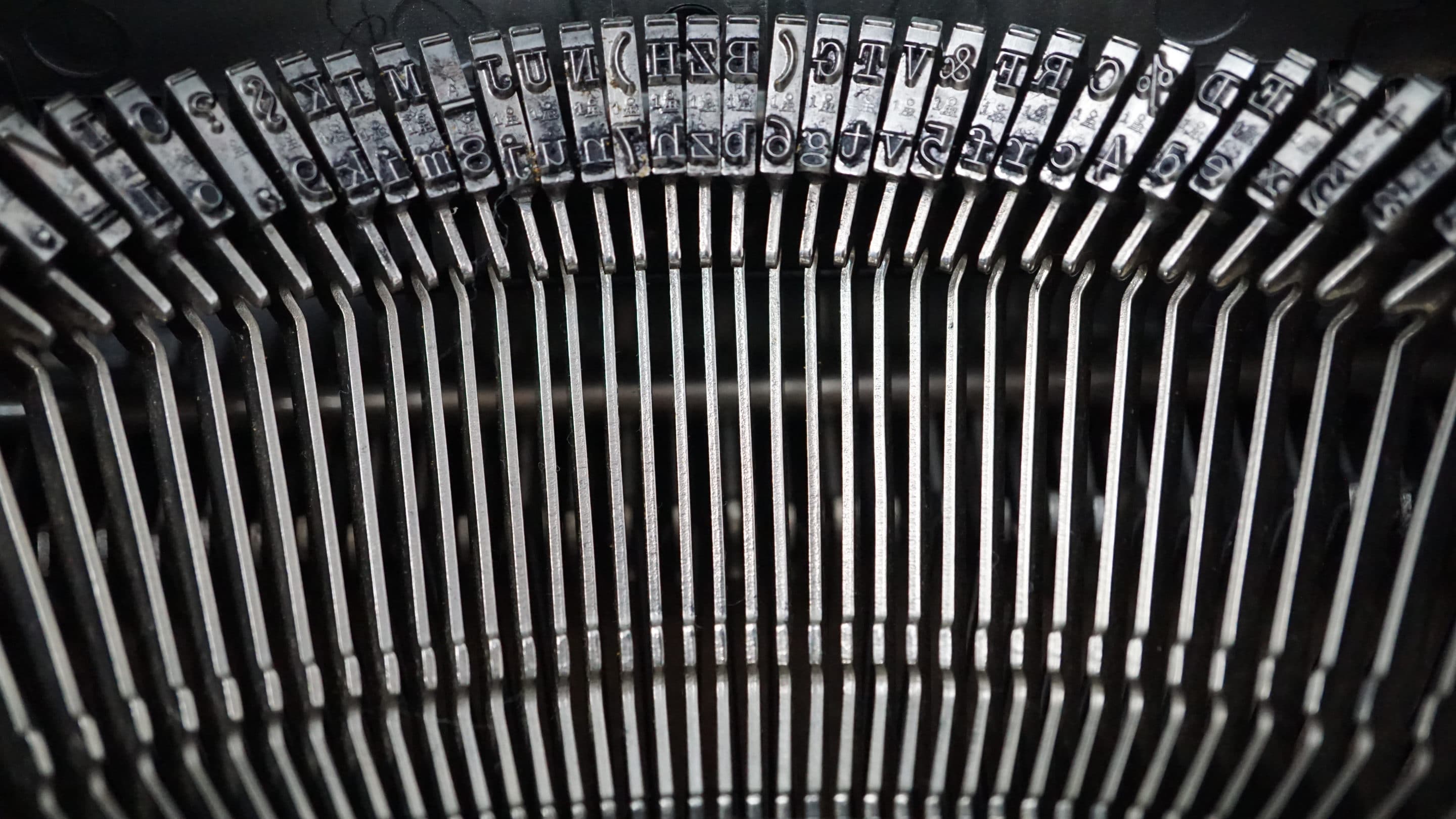After a period (full stop), do you put one space or two spaces? People passionately belong to one camp or the other. And it seems to be somewhat age-related, with older people showing a preference for using two spaces, whereas younger people tend to use one space.
This topic comes up semi-regularly on Twitter, with strong opinions expressed, so I explored it a bit further. In an unscientific, informal poll I conducted recently, 82% of respondents use one space after a period (Table 1). The majority of respondents (71%) were under 40 years of age and, of those, 91% use one space. Among respondents 40 years of age or older, almost one-half (43%) use two spaces.

For the longest time, I used two spaces after a period. That’s what I had been taught in typing class, eons ago, and I carried it through into my business of medical writing and editing. But somewhere around ten or more years ago, I noticed that websites and social media gradually switched to one space, and it was happening more frequently. This seemed to be largely an online phenomenon. As a scientist, I conducted some online research and learned that one space was the new, preferred format in writing; two spaces were considered wasteful of space and “outdated.”
I refuse to change my formal writing style simply to keep up with trends. Proper grammar and spelling are proper grammar and spelling, after all. They will live on forever and evolve slowly. Then I discovered some peer-reviewed medical journals actually specified in their “Instructions to Authors” that only one space should follow a period. When that edict came down, I made the switch to one space. It was a thoroughly ingrained habit that was difficult to unlearn, but I did it. It took time, but now one space after a period is my thoroughly ingrained new habit.
How did the change from two spaces to one space come about? It has to do with fonts and typesetting. Anyone who learned to type on an actual typewriter, whether electric or manual, would have been taught to use two spaces for any end-of-sentence punctuation mark, i.e., those that have a period at the bottom, including the question mark, exclamation point, and yes, even the colon. We lost marks if we forgot to use two spaces.
Typewriters used monospaced typesetting, where every character, whether the letter i or m or a period or comma, was given the same amount of space on the type hammer, making the text uneven and “spacey.” Two spaces were needed between sentences to allow the reader to easily recognize the beginning of a new sentence.
Courier font is an example of typewriter typesetting. Two spaces after a period are required. This font fits fewer letters to an inch than most other fonts.
Word processors use proportionally spaced fonts, which adjust spacing according to the width of the letter and thus makes the beginning of a new sentence more recognizable with just one space after the period. A proportional font fits 12 letters into the same space where monospace can only fit nine letters. As word processors and proportional fonts became the norm, the shift to only one space after a period began.
The Modern Language Association (MLA) recommends one space after a period. The MLA Handbook for Writers of Research Papers also recommends one space, but provides a disclaimer that “there is nothing wrong with using two spaces … unless an instructor asks you to do otherwise.”
The Chicago Manual of Style 15th Edition (2003) explicitly recommends one space.
The Gregg Reference Manual (2005) recommends one space.
While the American Psychological Association (APA) style guide as of 2009 recommends two spaces for draft manuscripts, this recommendation does not apply “to the published, or final version, of a work” and “the usual convention for published works remains one space after each period.”
The support for using only one space is overwhelming. In my experience, most scientific and medical journals prefer manuscripts that use only one space after a period. If you decide to take the plunge and make that change from two spaces to one, as I did, be prepared that it will take some time for it to become routine.
Here’s a handy tip so that your need to correct double spaces to single spaces doesn’t block your writing flow. When you’ve finished the document, use Word’s “find and replace” feature to find all the double spaces and replace them with a single space. This also comes in handy when you’re working on a document that has been shared among several coauthors with differing preferences for the number of spaces.
Ultimately, whichever spacing you choose, ensure you use it consistently throughout your paper. For any submission, consistency is key.
Have a suggestion for a future blog topic and/or writing tip? I welcome comments below.



Recent Comments